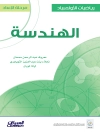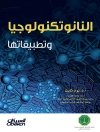This volume offers institutional researchers several examples ofthe ways in which quantitative and qualitative methods can beintegrated for a better grasp of how members of our educationalcommunities understand and experience their environments on thebasis of their multiple identities.
The first two chapters provide context for the volume’s themewith definitions and overview of the underpinnings of mixtedmethodology. Subsequent chapters illustrate the multiple ways inwhich qualitative and quantitative methods can be integrated tounderstand the complexity of identity and experiences ofmarginalized groups in the academy.
Other chapters focus on students’ experiences and demonstratehow mixed-methodology approaches were used to
* explore college access among first-generation Asian Americansand Pacific Islanders
* analyze racial ideology of white males with interview datadriving analysis of longitudinal dataset
* and research and accessment generating accurate understandinghow of race and gender shape students’ experiences within thecampus
The final chapter presents findings of a mixed-methods inquiry tochallenge current conceptions about racial categorization andpractices for gathering institutional data on students’ identity.
Volume editors Kimberly A Griffin, assistant professor ofeducation policy studies at the Pennsylvania State University, and Samuel D. Museus, assistant professor of educational administrationat University of Hawai?i Manoa, and contributing authors advocatefor intersectionality research and argue that it holds greatpromise for advancing knowledge in higher education. Their book isideal for institutions and institutional researchers who want tounderstand and most effectively serve their students andfaculty.
This is the 151st volume of the Jossey-Bass quarterly reportseries New Directions for Institutional Research.Always timely and comprehensive, New Directions for Institutional Research provides planners and administratorsin all types of academic institutions with guidelines in such areasas resource coordination, information analysis, program evaluation, and institutional management.
Содержание
Editors’ Notes 1
Kimberly A. Griffin, Samuel D. Museus
1. Mapping the Margins in Higher Education: On the Promise of Intersectionality Frameworks in Research and Discourse 5
Samuel D. Museus, Kimberly A. Griffin
This chapter defines intersectionality and asserts theimportance of considering individuals’ experiences as influenced bytheir multiple identities in higher education and institutionalresearch.
2. Application of Mixed-Methods Approaches to Higher Educationand Intersectional Analyses 15
Kimberly A. Griffin, Samuel D. Museus
Perceived methodological incompatibility, emergence ofparadigmatic pragmatism, and basic types of mixed-methods researchare presented in this chapter, along with a discussion of itsusefulness in conducting intersectional analysis.
3. Intersectionality in Context: A Mixed-Methods Approach to Researching the Faculty Experience 27
Meghan J. Pifer
This chapter discusses how social network analysis andinterviews can provide insight into how faculty identify like peersand form relationships with their colleagues.
4. Analyzing Gender Differences in Black Faculty Marginalization Through a Sequential Mixed-Methods Design 45
Kimberly A. Griffin, Jessica C. Bennett, Jessica Harris
Interviews and data from a national survey are used to explorehow race and gender intersect and influence faculty experienceswith marginalization in this chapter.
5. An Introductory Mixed-Methods Intersectionality Analysis of College Access and Equity: An Examination of First-Generation Asian Americans and Pacific Islanders 63
Samuel D. Museus
This chapter challenges the ‘model minority’ myth, illustratinghow a sequential analysis of national data and interviews can beused to understand how race, ethnicity, and generational statusshape access to higher education.
6. Using a Sequential Exploratory Mixed-Method Design to Examine Racial Hyperprivilege in Higher Education 77
Nolan L. Cabrera
The results of a study of the racial ideologies of white malestudents are explored in this chapter through a sequential analysisof qualitative and quantitative data, highlighting the connectionsbetween privileged identities and the perpetuation of systemicracism.
7. The Utility of Using Mixed-Methods and Intersectionality Approaches in Conducting Research on Filipino American Students’Experiences with the Campus Climate and on Sense of Belonging93
Dina C. Maramba, Samuel D. Museus
Qualitative and quantitative data are used in this chapter toillustrate how mixed methods promote deeper understanding of genderdifferences in how male and female Filipino students perceive andexperience campus climate.
8. Identity, Intersectionality, and Mixed-Methods Approaches103
Casandra E. Harper
This chapter addresses the challenges of capturing identityamong mixed-race college students and reveals how mixed-methodsstrategies can illuminate change as well as the meaning associatedwith those changes.
Index 117
Об авторе
Kimberly A. Griffin is an assistant professor of education policy studies at the Pennsylvania State University and a research associate in the Center for the Study of Higher Education.
Samuel D. Museus is an assistant professor of educational administration at the University of Hawai’i Manoa.












